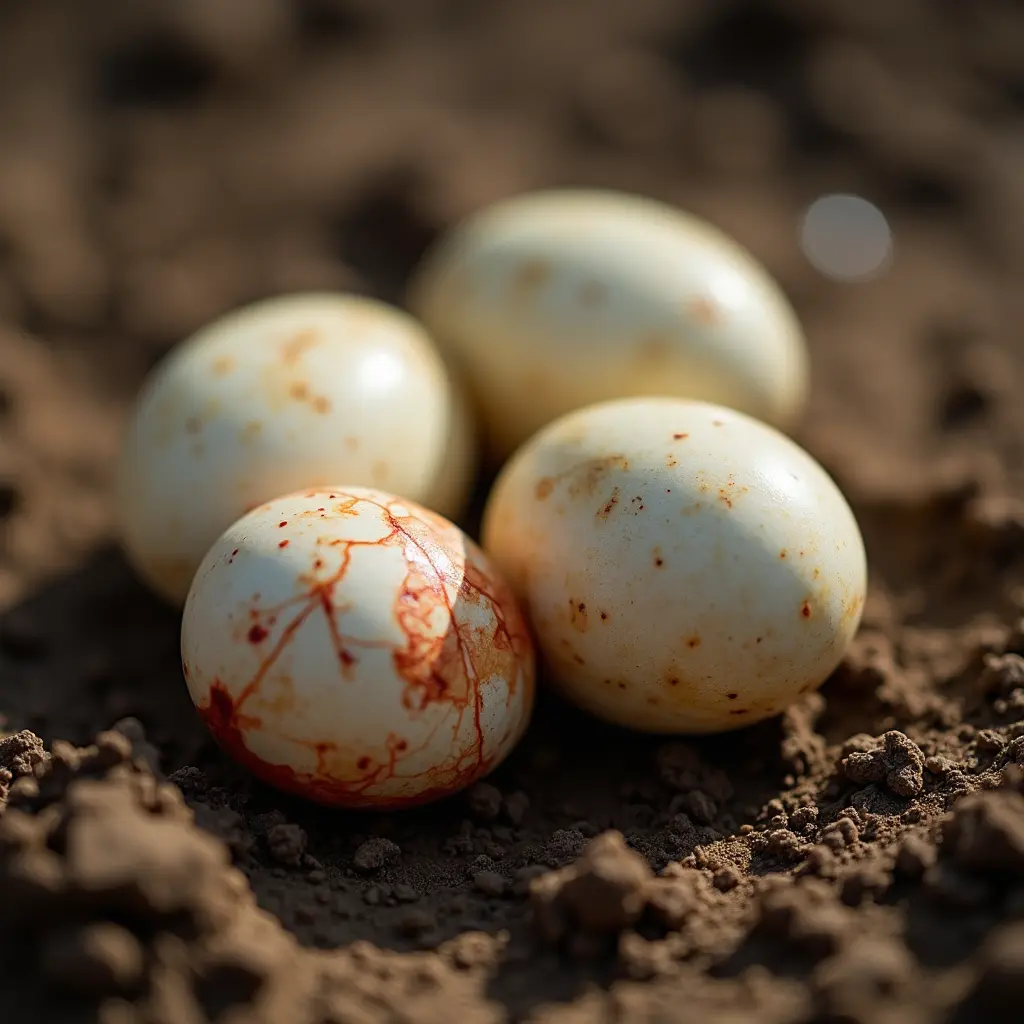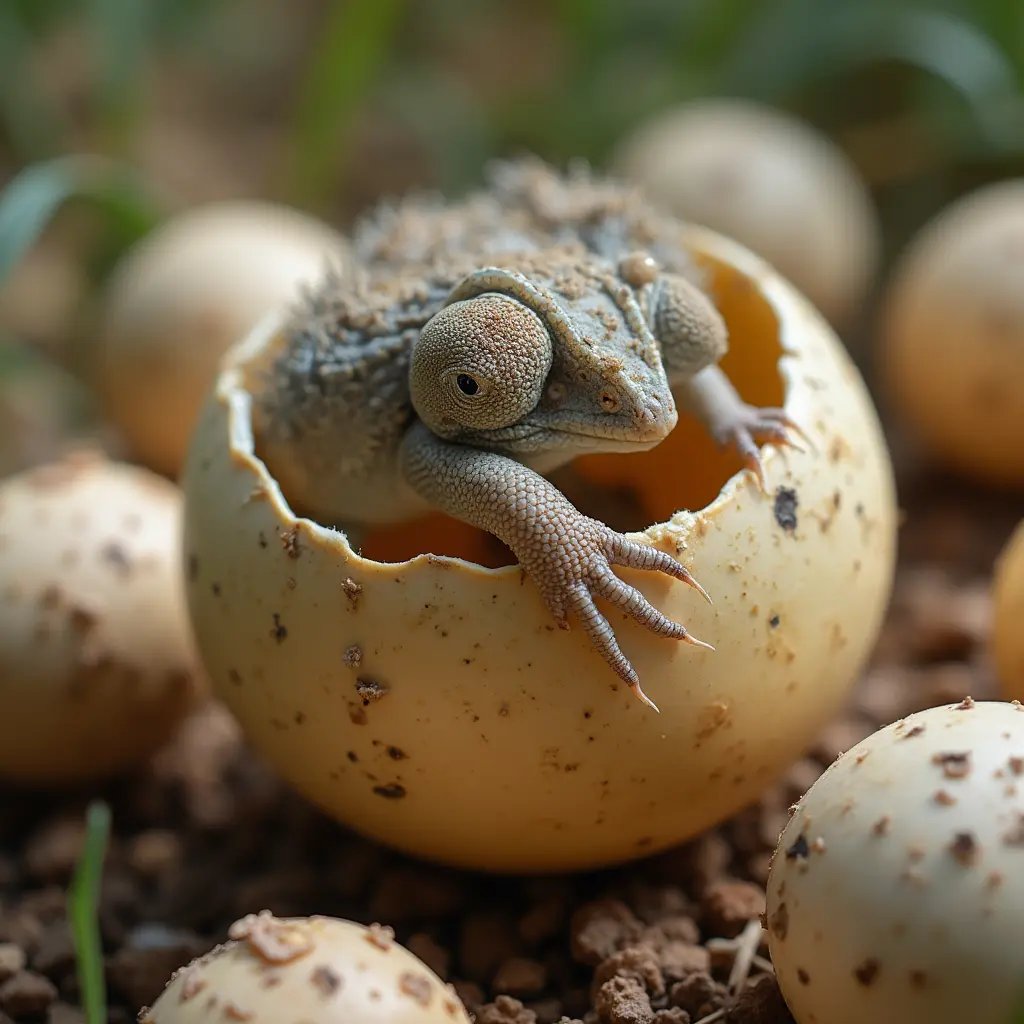Iguanas are remarkable reptiles with fascinating reproductive processes. Their eggs hold the key to their life cycle, making them an exciting topic for both enthusiasts and breeders. Whether you’re a reptile keeper or just curious, understanding how iguana eggs are laid, incubated, and cared for is essential. Let’s explore everything you need to know about iguana eggs, from their unique characteristics to proper incubation techniques.
Table of Contents
1. Overview of Iguana Reproduction
Iguanas, like many reptiles, are oviparous, meaning they lay eggs instead of giving live birth. Female iguanas typically reach sexual maturity between two and four years of age, depending on their species, size, and environmental conditions. During the breeding season, which usually occurs during the dry months in their natural habitats, females dig nests in sandy or loose soil to deposit their eggs.
The average clutch size for iguanas varies by species. For example, green iguanas lay between 20 and 70 eggs per clutch, while smaller species like spiny-tailed iguanas may lay fewer eggs. After laying, the female covers the eggs with soil to protect them from predators and the elements.
2. Physical Characteristics of Iguana Eggs
Iguana eggs are soft-shelled and oval-shaped, resembling ping pong balls with a slightly leathery texture. Their creamy white color makes them easily distinguishable, and they measure approximately 1.5 to 2 inches in length.
Fertile iguana eggs develop visible veins as they incubate, a sign of healthy embryonic growth. Infertile eggs, on the other hand, often collapse or discolor within a few weeks. The softness of their shells allows them to absorb moisture during incubation, which is crucial for the development of the embryo inside.


3. Preparing a Nesting Site for Female Iguanas
Creating the right environment for a female iguana to lay her eggs is crucial for her health and the success of the clutch.
- Nest Box Design: Use a nesting box filled with moist sand or soil, mimicking the natural conditions where iguanas typically lay eggs. The depth should allow her to dig at least 12 to 18 inches comfortably.
- Temperature Control: The nesting area should be kept at a temperature of 82-88°F (28-31°C). This is critical to encourage the female to lay her eggs and ensure the eggs’ survival.
- Privacy: Iguanas prefer secluded, quiet areas for laying eggs. Position the nest box in a calm part of the enclosure or provide a separate nesting enclosure.
- Hydration: Ensure the soil or sand is slightly damp but not waterlogged, as excessive dryness or moisture can harm the eggs.


4. Incubating Iguana Eggs
Once the eggs are laid, proper incubation is essential for hatching healthy baby iguanas.
- Temperature Requirements: The incubator should maintain a consistent temperature of 85-89°F (29-32°C). Fluctuations can harm the developing embryos.
- Humidity Levels: Keep humidity levels between 75-85%, as iguana eggs are highly sensitive to moisture. A hygrometer is essential for monitoring this.
- Substrate Choice: Place the eggs on a moist substrate such as vermiculite or perlite. These materials help retain moisture without becoming soggy.
- Handling Precautions: Do not turn or rotate the eggs once laid, as this can disrupt the orientation of the embryo and lead to developmental issues.
Incubation periods typically last 60 to 90 days, depending on the species and environmental conditions. Fertile eggs will gradually grow larger as the embryos develop, while infertile eggs may show signs of collapse or fungal growth.
5. Common Challenges with Iguana Eggs
Breeding iguanas and caring for their eggs comes with unique challenges:
- Infertile Eggs: Even if a female has not mated, she will still lay eggs, but these are infertile. Infertile eggs often collapse or rot during incubation and should be removed to prevent contamination.
- Egg Binding (Dystocia): Female iguanas may sometimes experience difficulty laying eggs, a condition known as egg binding. Symptoms include lethargy, a swollen abdomen, and decreased appetite. Veterinary intervention is crucial in such cases.
- Mold or Fungus: Improper humidity levels or damaged eggshells can lead to mold growth, endangering the entire clutch. Always remove moldy or collapsed eggs to protect healthy ones.
- Temperature Fluctuations: Inconsistent incubator temperatures can harm the embryos, leading to deformities or failed hatching.


6. Hatching Iguana Eggs
When the incubation period ends, the baby iguanas will begin hatching. This process, known as pipping, involves the hatchling using a small tooth, called the egg tooth, to break through the shell.
- The Hatching Process: Hatching can take several hours or even a day. Be patient and avoid assisting unless absolutely necessary, as premature handling can harm the hatchling.
- Post-Hatch Care: Once the hatchlings emerge, move them to a separate enclosure with a warm, humid environment to mimic their natural habitat. Ensure the enclosure temperature remains around 85-90°F (29-32°C).
- Feeding Hatchlings: Baby iguanas typically don’t eat immediately after hatching, as they absorb nutrients from the yolk sac. Within a few days, provide finely chopped leafy greens and vegetables as their first meal.
Conclusion
Caring for iguana eggs requires patience, attention to detail, and a deep understanding of their needs. From preparing a suitable nesting site to ensuring proper incubation conditions, each step is critical for successful hatching. By providing the right environment and monitoring closely, you can help bring healthy baby iguanas into the world.
For reptile enthusiasts, witnessing the hatching of iguana eggs is a truly rewarding experience. It’s a testament to the beauty of nature and the importance of proper care in ensuring the well-being of these incredible creatures. Whether you’re a breeder or a passionate iguana owner, understanding the nuances of iguana eggs can enrich your journey with these fascinating reptiles.